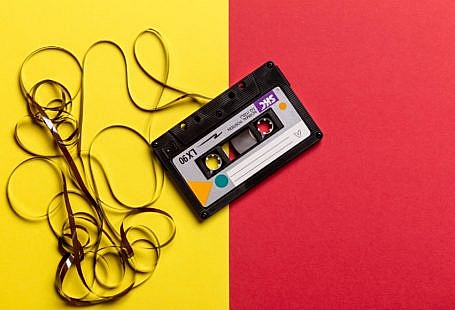It is crucial that you store your digital photos in a good, organized way. This guide shows 6 options for the best way to store digital photos. As you may know, digital images have many advantages over traditional film. One notable exception: security.
When compared to prints or negatives, digital photos tend to be far more vulnerable. After all, it’s often possible to accidentally delete them with a few mouse clicks. Even if you’re careful, you may still lose your images to a hard drive failure.
Want to know about the best way to store digital photos? Here are 6 ways to ensure that your digital memories will stay with you!
External Drives
When we talk about external drives, most people think of the standard SATA hard drive. To copy pictures to it, all you need to do is connect it to your PC via USB.
As mentioned above, the main issue with this method is that hard drives can fail. Solid-state drives (SSDs) tend to be more stable, but also cost more. Plus, you’ll still need space for the drive, increasing your clutter problems.
You’ll also have to use one of your USB drives to connect this hard drive. Depending on the number of USB ports on your PC, this can be a big sacrifice. Finding space for the wires in your workspace is often a bother as well.
This is why using a USB flash drive is likely to be your best bet. You can store them away until needed and take them with you wherever you go. They’re also much cheaper than the above options while offering a decent amount of space
The Cloud
When it comes to the best way to store photos, the cloud gets a lot of good press. If you’re not proactive with your backups, this is a great set-and-forget option.
If you’re using a Mac desktop client, there are plenty of cloud services you can go for. Many of them offer decent amounts of cheap or free storage. Popular options include Google Drive, Dropbox, Bitcasa, Mediafire, and Microsoft OneDrive.
Some of these services come with mobile apps that you can configure to automatically back up the Camera Roll feature on iOS devices. They also work with desktop applications such as Aperture or Photos.
The one thing to watch out for here is the speed of local access. For best results, save your photos in a folder that’s set up to sync from your desktop to the cloud. Bitcasa offers that by default, whereas other services have to use third-party software.
Cloud Photo Services
Speaking of how to store photos in the cloud, photo services can be a great backup. That way, you can always carry your entire photo collection in your pocket.
With services such as Adobe Creative Cloud, you can back up photos from anywhere. You also gain access to another layer of security and the tools for editing photos. You can do this from any device or web browser you’re using.
That said, putting all your eggs in one basket may not be the best idea. Companies launch new products all the time, and many of them eventually fold. Using an app such as Amazon Photos is a good way to back up the most important copies.
Recordable Media
Recordable media includes CDs, DVDs, and SD cards. Not that long ago, this was the main method of backing up photos.
The issue here, of course, is that relying on this method could lead to a large media collection. Nobody enjoys maintaining an ever-growing pile of CDs. If you’ve used more than one camera, you’ll also have to deal with several SD cards.
The more your collection grows, the more likely you are to mix things up. More importantly, many optical discs can fall prey to disc rot and become unusable. This is why recordable media works better as a short-term solution than a long-term one.
Multiple Libraries
Did you know that the latest versions of Photos and Aperture share the same library format? Not only that, but they allow users to access several libraries at once.
Needless to say, this is a big help with computer photo storage. If you want to store photos across multiple libraries, there’s nothing stopping you. This is true even if you’re using different storage media for hosting these libraries.
Start by moving your older and unused pictures to a separate library on an external drive. By launching Photos or Aperture while holding down the Option key, you can switch between libraries at will. You can also do it by going to File > Switch to Library.
This is a big help if you’re storing your libraries on redundant storage systems. These include network-attached storage (NAS) or a Drobo device. That way, you can free up precious space on your modern flash drives.
Prints
We talked about why prints aren’t the best way to store pictures, but they’re an option. On some occasions, they can even be a decent option.
Sure, printing out digital photos may sound pointless to anyone born after 1990. Still, having prints may come in handy in the future. At the very least, prints are a great hard copy that you can scan if something happens to your digital files.
Plus, prints aren’t that expensive these days. Services such as Shutterfly offer unlimited storage and have various weekly deals to print those photos. Your local stores such as Walgreens offer the same service minus the shipping costs.
Keep in mind that the best way to print photos is if they’re in a JPG format. If you’re saving your photos as PDF files, this can be a problem. To learn how to change PDF to JPG, click on that link.
More on the Best Way to Store Digital Photos
As you can see, there’s no real best way to store digital photos. Instead, what you should do is use some combination of the methods we described above.
Of course, any storage method is better than not bothering to back up at all. No matter how good your tablet or smartphone is, it won’t last forever. Think of photos you have stored on them as your negatives and back them up somewhere else.
Interested in learning more about the history of digital photography? Looking for tips on how and where to save your photos? Keep reading our “How To” section!





